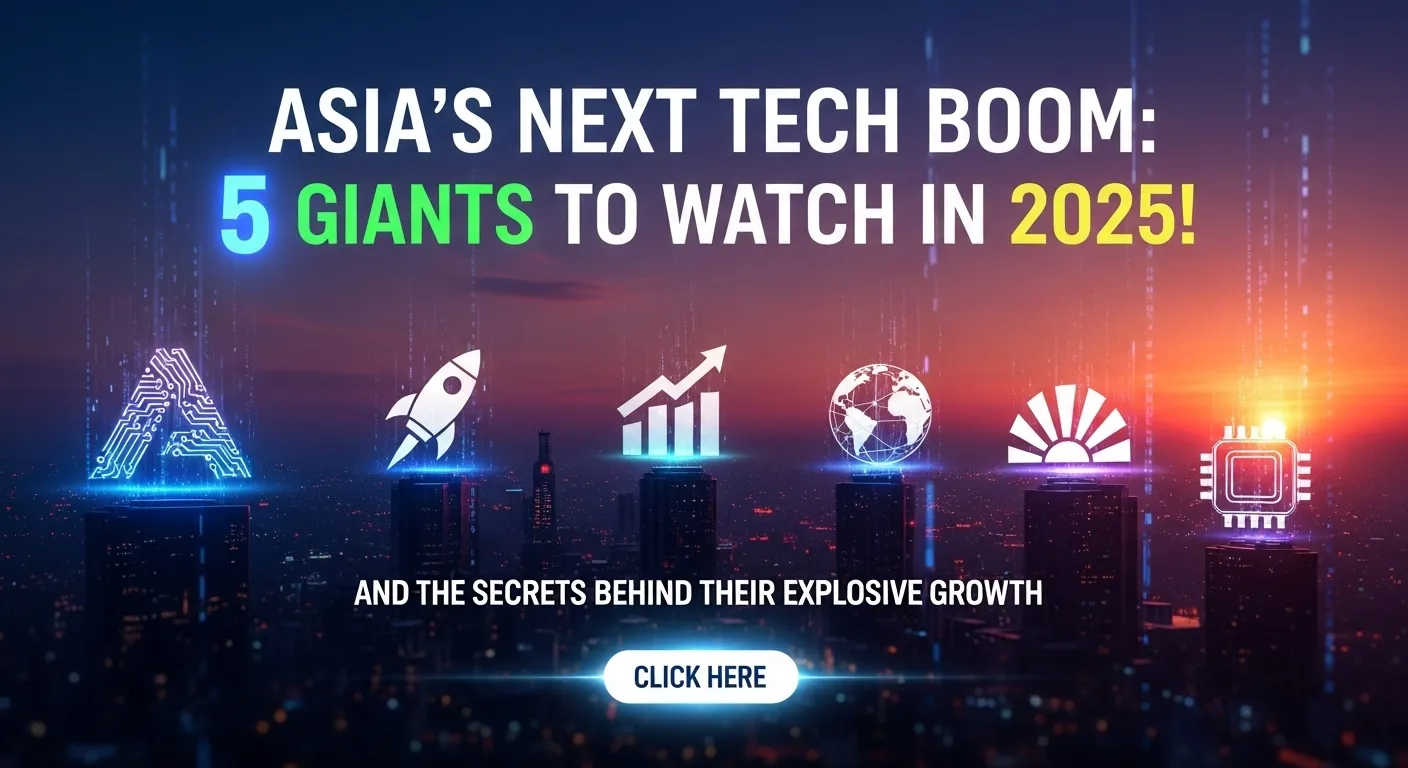Asia’s tech heavyweights are having a moment. From AI-grade chips to superapps and low-cost e-commerce, “High Growth Tech Giants in Asia” are sprinting into 2025 with fresh demand, bigger margins, and bolder bets. Here’s your smart, scannable playbook.
What Is High Growth Tech Giants in Asia?
It’s the cohort of Asia-based, large-cap technology companies compounding revenue and user growth thanks to structural trends: AI compute, advanced memory, cloud, fintech, and value-driven e-commerce. Think chip titans (TSMC, Samsung, SK hynix), platform leaders (Tencent, Alibaba, Meituan), cross-border disruptors (PDD/Temu), and Southeast Asia super-apps (Sea Group).
How the Growth Engine Works
AI hardware flywheel: Hyperscalers and foundation-model players are pouring money into GPUs and memory. That demand trickles to foundries (TSMC) and HBM leaders (Samsung, SK hynix), creating multi-year backlogs and pricing power.
Platform monetization: Superapps convert attention into ads, payments, and local services. Cloud and AI services add higher-margin revenue streams for giants like Tencent and Alibaba.
Borderless commerce: PDD’s Temu and regional marketplaces compress prices with supply-chain scale, pulling in new users globally while SEA platforms like Shopee (Sea Group) deepen engagement with payments and logistics.
Benefits & Use Cases
- AI infrastructure leverage — Chip makers and memory suppliers ride multi-year capex cycles as enterprises build AI data centers.
- Operating leverage — Platforms scale fixed costs across hundreds of millions of users; incremental margins can widen quickly in upcycles.
- Use case: Cross-border bargain hunting on Temu, lightning-fast food delivery via Meituan, or mobile gaming + payments inside Tencent’s ecosystem.
Costs/Pricing
Semis: Pricing hinges on node leadership (e.g., 3nm/2nm foundry) and leading-edge memory (HBM). Tight supply and long lead times can sustain premium pricing.
Platforms: Take-rates and ad yields drive monetization; logistics and subsidies are the big costs in e-commerce. Cloud/AI workloads add higher ARPU but require data-center investment.
Investor lens: Track revenue growth, gross margin expansion, capex intensity, and free cash flow. For ADRs and HK listings, consider FX and liquidity.
Local Insights (GEO)
South & Southeast Asia: 5G rollouts, cheaper smartphones, and digital wallets keep onboarding new users. India’s rapid 5G scale-up benefits device cycles and data-heavy apps; Southeast Asia’s growing middle class supports e-commerce, fintech, and gaming. For Bangladesh and neighboring markets, cross-border platforms and low-cost marketplaces are popular entry points, while cloud and AI services increasingly localize content and payments.
Alternatives & Comparisons
- TSMC vs. Samsung Foundry: TSMC pros: process leadership, deep AI GPU pipeline; cons: geographic concentration. Samsung pros: integrated memory + foundry scale; cons: foundry share still trails TSMC.
- SK hynix vs. Samsung (Memory/HBM): SK hynix pros: HBM leadership and pricing power; cons: cycle sensitivity. Samsung pros: capacity breadth and vertical integration; cons: heavy capex, execution spread across businesses.
- Tencent vs. Alibaba (Platforms/Cloud): Tencent pros: gaming + ads monetization, mini-programs; cons: game approval cycles. Alibaba pros: commerce scale and re-accelerating cloud; cons: intense competition and reinvestment.
- PDD (Temu) vs. Sea (Shopee): PDD pros: global growth via ultra-low prices; cons: tariff and logistics scrutiny. Sea pros: balanced growth in e-commerce + fintech + gaming; cons: subsidy discipline required in competitive markets.
- Meituan vs. Grab: Meituan pros: dense on-demand logistics in China; cons: price wars pressure margins. Grab pros: super-app reach in SEA; cons: profitability cadence tied to promotions and mobility cycles.
Step-by-Step Guide
- Map the growth vectors: Identify AI exposure (foundry, HBM, packaging), platform monetization (ads, cloud, fintech), and logistics efficiency.
- Check the numbers: Look for double-digit revenue growth, rising gross margins, disciplined capex, and positive operating cash flow.
- Pressure-test risks: Consider regulation, geopolitics, export controls, tariffs, and FX. Diversification across sub-sectors (chips, platforms, commerce) reduces single-factor risk.
FAQs
Is investing in Asia’s high-growth tech giants worth it?
For long-term investors who can handle volatility, the combo of AI infrastructure demand and platform monetization is compelling. Diversify across hardware and software to smooth cycles.
How long does the current AI upcycle last?
With hyperscaler and enterprise deployments stacking up, AI capex looks like a multi-year wave. Expect periodic digestion quarters, but secular demand remains intact.
Are there risks?
Yes—policy shifts, tariffs, data regulations, and export controls can bite. Supply-chain shocks and currency swings add noise. Use position sizing and keep an eye on guidance.
Bottom Line
The “High Growth Tech Giants in Asia” story is broader than any one ticker: chips and memory fund the AI era; platforms monetize audiences with ads, payments, and cloud; cross-border commerce unlocks the next 100 million users. If you track execution and manage risk, 2025 could be a breakout chapter.
Sources
- Reuters — Taiwan Sept exports: AI demand remains strong
- Yahoo Finance — TSMC posts forecast-beating Q3 revenue surge
- Samsung — AI Memory & Storage vision (FMS 2025)
- Reuters — Samsung, SK hynix to supply memory for OpenAI data centers
- Korea Economic Daily Global — HBM demand outlook, OpenAI linkage
- PDD Holdings IR — Quarterly Results
- WSJ — Temu owner PDD earnings update
- Sea Group — Q2 2025 Results (press release)
- Yahoo Finance — Sea Limited Q2 2025 highlights
- Tencent — 2025 Q1 Results (company PDF)
- Finimize — Meituan growth, price-war context
- RCR Wireless — Reliance Jio 5G scale & IPO timing
- AMD — India’s 5G breakthrough with Reliance Jio (industry blog)

